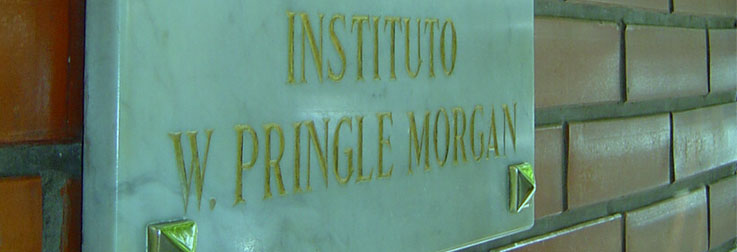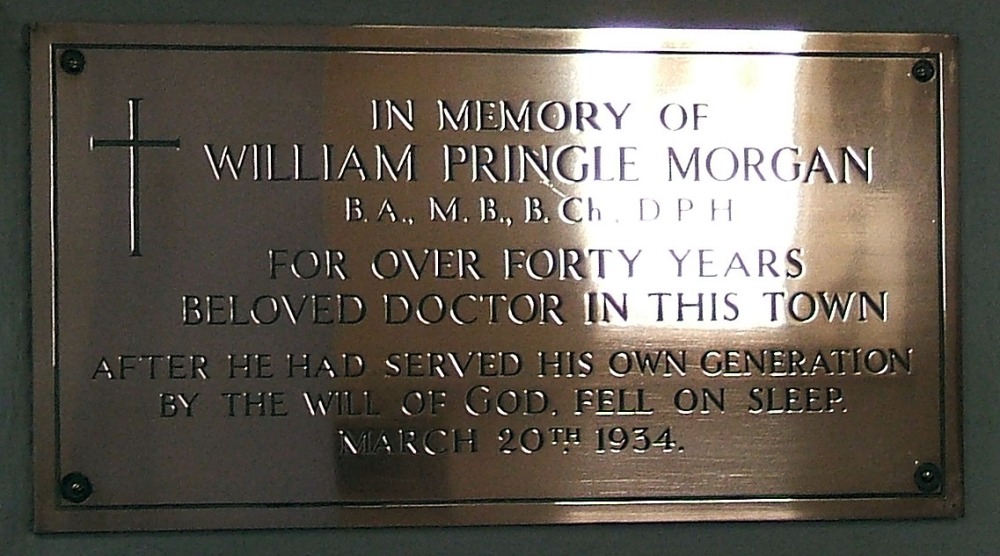About 7,000 miles away from Seaford in the centre of the Argentinean city of Buenos Aires is a clinic specialising in helping children with dyslexia. Amazingly, the W. Pringle Morgan Institute is named after a Sussex doctor. Morgan is one of the unsung heroes of our county and, apart from a brass plaque in the north aisle of a parish church, he has no memorial.

William Pringle Morgan was born in 1861 at Rostrevor near Newry in County Down, Northern Ireland. His father was a vicar who ensured that his son received a classical education. He studied at Dublin University and qualified as a doctor at a hospital in the same city. Morgan probably spent some time as a surgeon in the Royal Navy before he came to Seaford aged 25. In the latter part of the nineteenth century Seaford was served by just one doctor, Dr Tuck who lived in Hurdis House in Broad Street. When Dr Tuck died in 1886, Dr Morgan took over the practice and moved into the house.
He was apparently a busy man; he was a medical officer not only for Seaford but also Eastbourne Union Poor House and was the visiting physician for the Surrey Convalescent Hospital in town. He was also the President of the Seaford Mutual Improvement Society. He obviously loved Seaford and in 1893 published a paper in the London Medical Recorder promulgating the town as a healthy seaside resort.
The doctor worked from Hurdis House and provided a medical service, not only to the people of Seaford but also to its many schools, which paid the surgery a fixed annual fee for treating their pupils. One of these children, a 12 year old boy called Percy, fascinated Morgan. The young lad was highly intelligent and good at mathematics and sport, but his only failing was his inability to read. His headmaster thought him to be the brightest boy in the school but he continually wrote his name “Precy” and did not notice the spelling mistake even when it was pointed out to him. He could speak clearly but when asked to write “carefully winding the string round the peg” wrote “Calfuly winder the strung rond the pag” He studied Percy carefully for two years and came to the conclusion that it was a genetic disorder in processing vision rather than a problem with intelligence. He wrote up his findings which were published by the British Medical Journal on 7th November 1896 under the title “Congenital Word Blindness” The good Sussex doctor was the first person to diagnose dyslexia.
As the population of Seaford grew, it became necessary to appoint a second doctor to the practice and in 1898 he was joined by Doctor Charles Gervis. Morgan married a Seaford girl, Ethel Eastwood and in 1899 they moved to a newly built house which Morgan named after his birthplace ‘Rostrevor’. (This is now the site of the the Tesco store.) This was not his only connection with Ireland as he remained a member of the Dublin University Biological Association. Dr Morgan was also a prominent freemason and one of the founder members of Seaford Golf Club which was formed in 1887 and, although keen, his name does not appear on any of the lists of competition winners for the club. Dr Morgan became a Seaford councillor and in 1907 was elected as Chairman of Seaford Urban District Council. He again served as chairman in 1912.
On the outset of the Great War, Dr Morgan travelled to Belgium with the Red Cross. He accompanied Millicent, the Duchess of Sutherland and a party of Red Cross nurses. In August 1914 they were present at the siege of and bombardment of the city of Namur. The siege started on the very day that Britain declared war on German. He worked for three weeks in the local hospital where he treated many wounded Belgian’s and Frenchmen. When the Germans captured the area he was given a pass by the Germans to travel to Brussels and return home via Holland. He was therefore one of the very first Englishmen to witness action in the Great War.

On returning to England he joined the military and saw active military service in Malta where he served between 1914 and 1916. He returned to Seaford when Dr Gervis was called up and Morgan had to ‘hold the fort’ until he returned in 1919. Just before Morgan retired in 1927 he sold Rostrevor and moved to Upper Belgrave Road. He died aged 74 in 1934 after serving over forty years as a GP in the town. The British Medical Journal called him “a man of transparent honesty and a perfect gentleman”

The name Doctor William Pringle Morgan is not recognised by many people in Sussex but his name is synonymous worldwide with the discovery of dyslexia – even as far away as Buenos Aires!
that is interesting. Why does the plaque say, ” Fell ON sleep “?
LikeLike
Why is this so poorly written — punctuation, grammar, etc.?
LikeLike
Sorry to disappoint you with my style of writing Freddy, especially in an item about dyslexia! Maybe I am slightly dyslexic myself as I managed to fail my English ‘o’ level twice but I try to do my best. I have corrected one spelling mistake but would be grateful if you could point out others. Thanks for reading the item.
LikeLike
Very interesting I didn’t know that fact, have now passed this information onto my historically minded grandsons, thankyou.
LikeLike